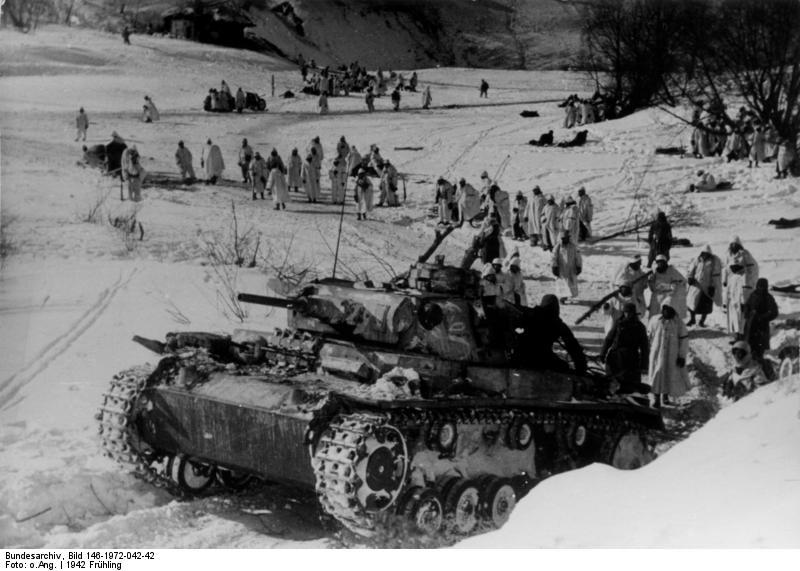German Panzer III Demyansk
The mid 1930's design/testing process for Germany's medium tanks ended up producing two early Second World War designs; the Panzer III and IV medium tanks; each armed with more powerful weapons than the Panzer I and II. Better armament however did not necessarily mean adequate armament. The Army Ordnance office's problematic decision to equip the Panzer III medium tank with a 37mm tank gun, for logistical reasons related to the previous order to equip German anti-tank units with the 37mm PAK 35 towed anti-tank gun, ended up handicapping German tank armament well into 1941. Even though the 37mm cannon possessed an outstanding muzzle velocity, the weapon's small caliber made it difficult to penetrate enemy armor. All of this occurred in spite of the Panzer III's design parameters calling for mounting a superb long barrel high-velocity 50mm L/60 gun, equal to anything Germany's potential enemies deployed in the late 1930s. Although gun barrel diameter is often regarded as the primary determinant in measuring the efficacy of a tank's primary armament, barrel length also represented a critical factor. It was, and remains today, a simple equation; the longer the barrel the higher the velocity of the round fired from the barrel. The higher the velocity of the shell fired by the tank the more likely that tank can destroy another tank. Thus, because of the Ordnance office's decision, the Panzer III, in its most commonly built "D" version of this period, mounted the insufficient relatively short-barreled 37mm gun.
Meanwhile Germany continued to upgrade the Panzer III. Therefore, by 1941 the Panzer III was finally being more generously equipped with the 37mm gun replaced by the 50mm L/42 gun. Eventually the 50mm L/42 would be replaced in turn by the even higher velocity 50mm L/60 gun. The L/60 gun produced a vastly improved muzzle velocity rated at 1180 meters per second, in comparison to the L/42's muzzle velocity only reaching half the L/60. By April 1941, German factories regularly refitted the older Panzer IIIs with L/42 guns as well as produced new models, overall a slow long overdue process leaving the Panzer III comparably armed to early model Shermans but still inadequately armed for killing tanks the likes of the T-34. As it was over one third the German army's tanks on July 1, 1941 were Panzer IIIs; comprising 327 of the early model 37mm gun armed Panzer IIIs and 1174 Panzer IIIs with the L/42 and L/60 50mm guns. Panzer III armor thickness also steadily increased over earlier models. Although the Panzer III needed the better protection to survive on the eastern front battlefield, the net effect created by increasing the tank's weight was to decrease engine life while increasing fuel consumption at exactly the time the German army could least afford it. Nevertheless the Panzer III would soldier on well into 1943 as one of the German army's primary tanks.
Picture Courtesy of German Federal Archive (Bild 146-1972-042-42)


